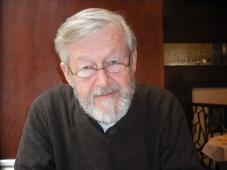 SPANISH THEATRE – a background note
SPANISH THEATRE – a background note
In normal course at La Trobe University (Australia) in the ’70s, I would have continued to teach on Spanish prose, poetry and theatre. I liked them all, though prose maybe less than poetry, and poetry a little less than theatre. When it was my turn to apply for study leave, I decided on a project in Spanish theatre which was to take me to Madrid. I wanted to examine in situ something which bothered me: the inviolability of a dramatist’s written text, versus the actor’s rôle in interpreting it and expressing himself.
As it turned out, I was poorly equipped, having been denied video equipment and told a taperecorder would do. Then, on arrival in Madrid, I learned too late it was to be a poor season for theatre. I had to attend secondary shows, take notes, and accept a sound track ‘on the house’. Depressed, and with time to spare as I awaited the nightly performance, I whiled away the day in second-hand bookshops … one of which was to yield … gold. This offered totally fresh possibilities, and gloom was dispelled.
In Australia, later, with 2,000 pieces of Spanish theatre dating from 1604 to 1900 before me, I resumed the sorting and cataloguing I had begun in Madrid between shows. Now were these pieces – many crisp and fresh – genuine, or reproductions? Could the printed dates – one for a play by Lope de Vega, dated 1604 – be true? Who were the authors? there would be no name, or a name just alluded to by initials. What should I do about a play with different titles? Why did so many boast no cover, and had never done so? Why were many preceded by the last lines of a play, followed by the first lines of another, or even did both things? Talk about problems! They were infinite.
But it was an impressive find: so many authors known and unknown, the number of genres from full length plays to monologues, the number of publishing houses, even the number of translators … Yet documentation meant challenges, and I was unprepared. I had to learn bibliographical techniques, prepare quasi-facsimile descriptions, organise my findings in a comprehensible and acceptable way so they would make sense to others … librarians, teachers, students and the general public. I was to work at it for years, and in the end the University of Glasgow incorporated the find in their Special Collections, part of the find being sold, part donated – as I was reluctant to see it split.
This had all begun with the aim of studying the relationship between the written words and directives of a dramatist versus the right of an actor to interpret them and express himself as he wished. While I had supported the idea that a text was sacred (though in varying degree according to the nature of the play), I had wanted nevertheless to know more about the effects should an actor assume control and ‘do it his way’. And there I was, engulfed by written words and stage directions: texts! A judgement.
Now I have yet other plays, more recently acquired and in more prosaic ways. There are many from the 1850s or so, well printed on generous and often crisp paper, many complete with actor particulars. There are many from the 1920s, maybe not so well presented … but with a humorous cover by Tovar portraying a dramatist, composer of zarzuelas, director and … actor of the time, some of whom wrote, designed, managed, and funded their show as well as act. What a world of the boards! Another judgement. And today, while aiming to present some of that ‘find’ and what it entailed, I aim also to draw attention to these wrongly neglected, more modern moments in Spanish theatre.
Agustin Moreto and Lope de Vega
A Role for Watermarks in Bibliographical Description